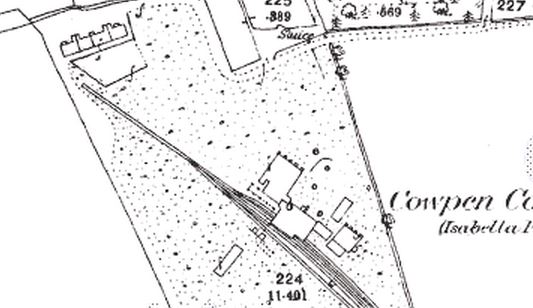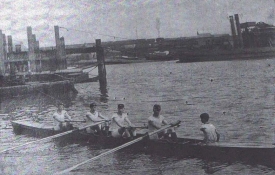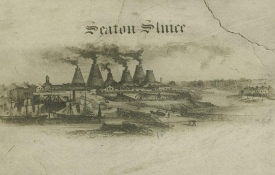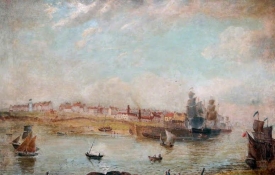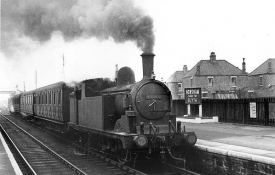The Durham Mining Museum website lists the beginning of the sinking of Isabella Colliery as the 30th October 1848. At its most productive in the 1930s the colliery employed 917 men. Coal was first deep mined in Cowpen in 1793 by a partnership of speculators that would eventually become the Cowpen Coal Company. This is from the Northumberland County Histories:
In 1840, the Cowpen owners took the coal under the properties of Messrs. M. J. F. Sidney and William Harbottle at Cowpen, on which they sunk the Isabella pit in 1848, to open out the Low Main at a depth of 1 1 1 fathoms. They connected it with the railway, which had, in 1847, been made by them between Blyth and Hartley for the purpose of securing an outlet to the Tyne along the line constructed from Seghill to Hay Hole in 1840, and subsequently extended to Hartley, the whole system forming the Blyth and Tvne Railway.
However, even by the time of the 1st edition Ordnance Survey map of c1860 only four houses are shown at the colliery. So what was happening in these early days? Where were the miners? I turned to the 1851 census for answers. The four dwellings at the "New Cowpen Colliery" were occupied by John Kettlewell a master sinker, age 51, born at Haltwhistle, his wife and 3 children, the eldest son also being a sinker. A lodger also resides at the house, once again a sinker, age 28, born in Westmorland. Next door lives John Coulson, an engineer, with a wife an daughter. The next houses are occupied by Edward Maughan and John Brewis and their small families. Both are enginemen. These men were highly skilled and were involved in the technical management of the colliery. A master sinker could earn more than twice that of a coal hewer, his wages alone being 15% of the sinking expenses, and sinkers were usually not an employee of the coal company but a contractor. So, had the pit sinking actually been completed in the 1850s? The mine would have been operational by this time. The ordinary mineworkers' accommodation had already been established at Cowpen Quay to house the workforce of the Cowpen Coal Company and most miners would have walked the half a mile to the new colliery from here. Only three sinkers are resident at the colliery by 1851. The main sinking would have involved a team of a dozen men or more. Kettlewell and his small team would have been overseeing the maintenance of the shaft and further sinkings down to lower coal seams. This is from "Ford Mason, Peter (2012-08-31). The Pit Sinkers of Northumberland and Durham":
With the establishment of the pit villages, generally in remote places, the first to be housed were the shaft sinkers, followed by the jerry builders who erected the long rows of one-up, one-down cottages, to house the incoming miners. With sinkers employed at the opening of a colliery, their accommodation consisted of small stone cottages built from the first stone raised from the pit shaft as it was being sunk. The line of cottages were often called Stone Row or Sinkers Row. The sinker rows were often much larger and commodious than any of the other colliery stone cottages, although still small to accommodate a large family. As progress was made towards the full operation of the pit, permanent colliery housing was built and eventually the sinker huts were replaced and the ‘raws’ were taken over by the colliery owners.Having housing nearby to the Isabella Pit the colliery owners probably did not feel so hurried to construct dwellings for their workforce, although this had taken place by the time of the 2nd edition Ordnance Survey map of c1897. This map shows eight dwellings on what was to be later named North Row. The original sinkers and engineers houses are clearly larger and more "commodious" than the four later additions to the row. North Row was demolished by the mid 20th century and so far I have been unable to trace any existing photographs of the housing.
| Isabella Colliery c1897 2nd Edition OS Map |
A relative of a former resident of North Row informed me recently that even in the latter days of the housing it was still the accommodation of the men more involved in the maintenance and essential operations of the colliery.
